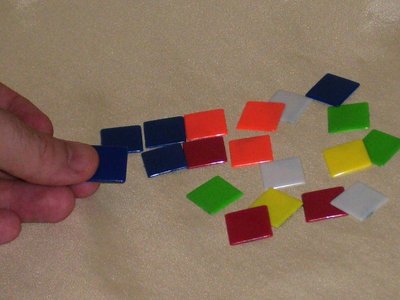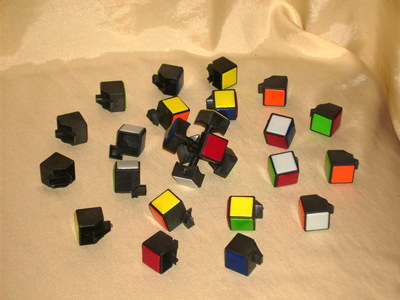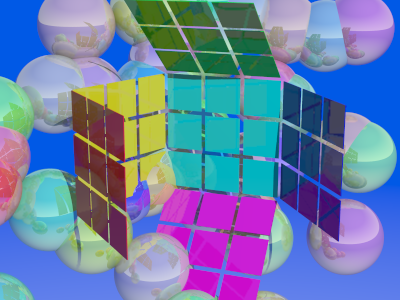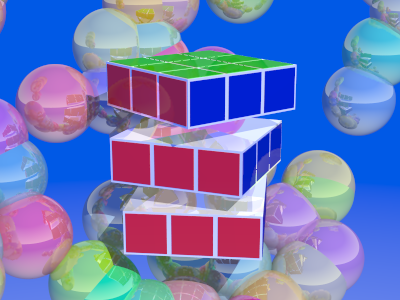The key to solving many puzzles is simple – a different perspective.
For the Rubik Cube, this change comes when…
|
||
|
||
|
||
|
Look at the three cubes below.

- To the beginner’s eye, the cube at the left is just as solved as the cube at the front.
- In reality, the cubes at the left and right are equally messed up!
Only on the cube at the front has real progress been made.
But why is that so?
Sure, the left cube has a green face. But most of the pieces making up that face are still in the wrong positions.
| If the corner piece towards the right is correctly positioned, why is its yellow sticker next to the light blue centre piece? |  |
| And the green and red edge piece surely doesn’t belong where you see it either! |  |
| Towards the back, there’s two more pieces with a yellow (orange?) stickers, but on the face with the dark blue centre |  |
| Ok, the corner piece at the front is correctly placed. It’s three stickers match the colours of the centre pieces they are on. Beginner’s luck, maybe? |  |
By contrast, on the cube at the front, all the pieces on the top layer, not just the stickers on the top face, are in their correct places.
This, then —> 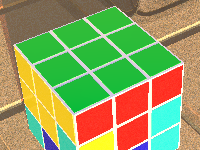 <— is the key!
<— is the key!
If you can solve one layer, then another, then another, you have solved the entire cube.
